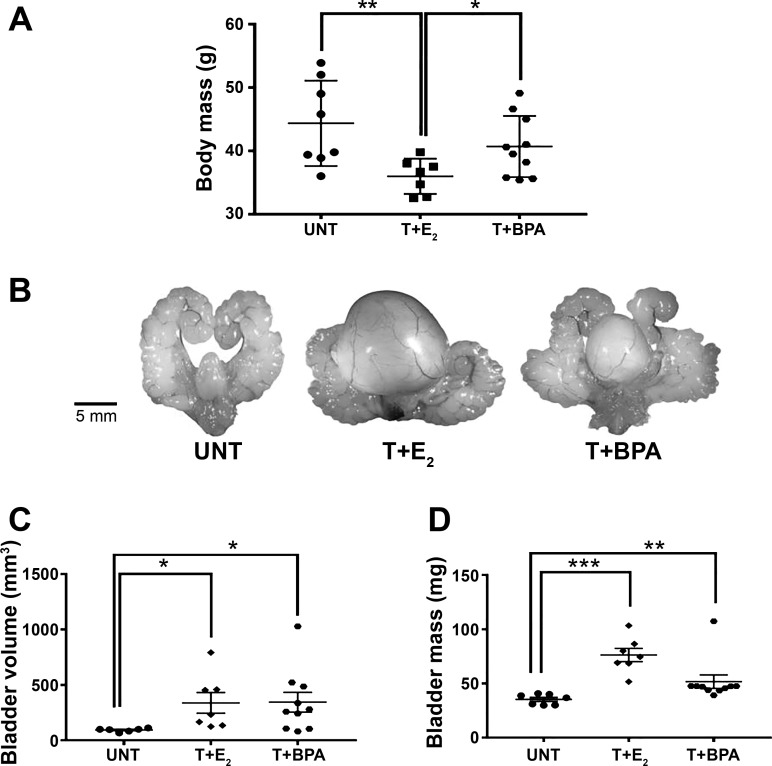Fig. 1.
Mice treated with testosterone + bisphenol A (T+BPA) displayed enlarged bladder mass and volume. A: postnecropsy, the body mass was determined. There was a significant decrease in body mass in the testosterone + estradiol-17β (T+E2)-treated mice relative to the untreated (UNT, P < 0.01) and T+BPA (P < 0.05)-treated mice. B: urogenital tracts from UNT, T+E2-treated, and T+BPA-treated mice for 4 mo. C: at the time of necropsy, bladders were measured in situ with a precision caliper in three dimensions, and the volume was estimated as an ellipsoid. There was a significant increase in bladder volume in the T+E2 (P < 0.05) and T+BPA (P < 0.05) groups relative to UNT. Body weight did not account for a significant component of the variance (P = 0.52). D: bladders were carefully dissected, emptied of urine, and blotted dry, and the mass was determined. There was a significant increase in bladder mass in the T+E2 (P < 0.0001) and T+BPA (P < 0.01) groups relative to UNT. Body mass was not a significant covariate (P = 0.86). *P < 0.05, **P < 0.01, ***P < 0.001 in post hoc testing.

